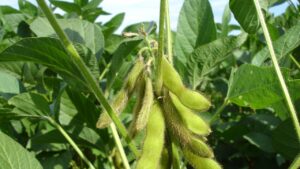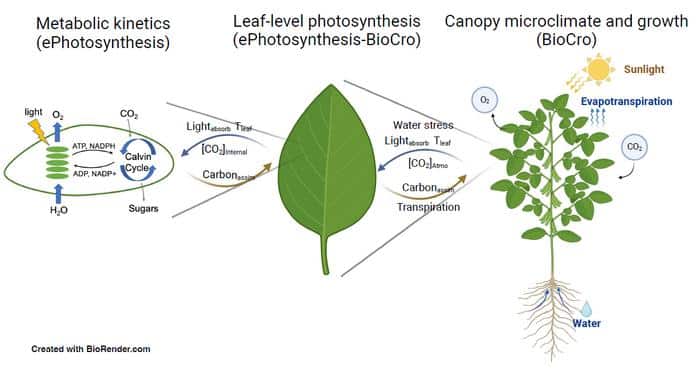An international effort called Realizing Increased Photosynthetic Efficiency (RIPE) aims to transform crops’ ability to turn sunlight and carbon dioxide into higher yields. To achieve this, scientists are analyzing thousands of plants to find out what tweaks to the plant’s structure or its cellular machinery could increase production. University of Illinois researchers have revealed a new approach to estimate the photosynthetic capacity of crops to pinpoint these top-performing traits and speed up the screening process, according to a new study in the Journal of Experimental Botany.
“Photosynthesis is the entry point for carbon dioxide to become all the things that allow plants to grow, but measuring canopy photosynthesis is really difficult,” says Carl Bernacchi, a Research Plant Physiologist for the U.S. Department of Agriculture, Agricultural Research Service, who is based at Illinois’ Carl R. Woese Institute for Genomic Biology. “Most methods are time-consuming and only measure a single leaf when it’s the function of all leaves on all plants that really matters in agriculture.”
Bernacchi’s team uses two spectral instruments simultaneously — a hyperspectral camera for scanning crops and a spectrometer used to record very detailed information about sunlight — to quickly measure a signal called Solar Induced Fluorescence (SIF) that is emitted by plants when they become “energy-excited” during photosynthesis.
With this SIF signal, the team gains critical insights about photosynthesis that could ultimately lead to improving crop yields.
They discovered that a key part of the SIF signal better correlates with photosynthetic capacity. This “SIF yield” accounts for only a fraction of the energy emitted as SIF by plants to the energy captured by plants in total, but it carries important information.
“With this insight, we can use a couple of instruments in a synergistic way to make more accurate estimates, and we can make these tools and pipelines more accessible to people who are interested in advancing the translation of photosynthesis,” said Peng Fu, a postdoctoral researcher who led this work at Illinois.
In this study, they picked out specific bands of light that are known to be linked to SIF (and are already well understood physiologically) to better understand what hyperspectral data is actually needed to make these estimates.
In the past, they relied on expensive hyperspectral cameras that captured thousands of bands of light.
“However, this study suggests that much cheaper cameras could be used instead now that we know what bands of light are needed,” said Matthew Siebers, a postdoctoral researcher at Illinois.
These tools could speed up progress by orders of magnitude, said Katherine Meacham-Hensold, also a postdoctoral researcher at Illinois. “This technology is game-changing for researchers who are refining photosynthesis as a means to help realize the yields that we will need to feed humanity this century.”












